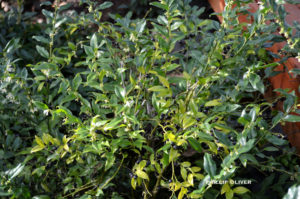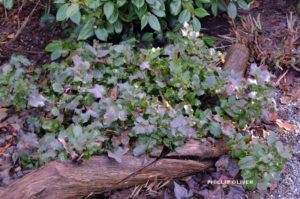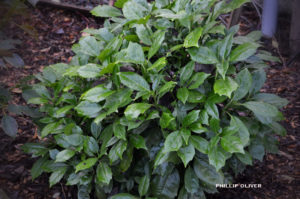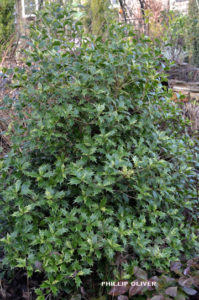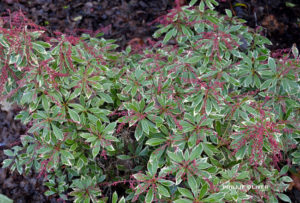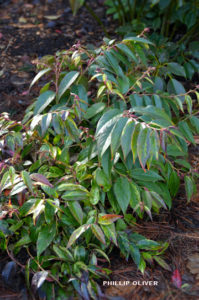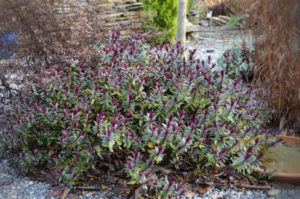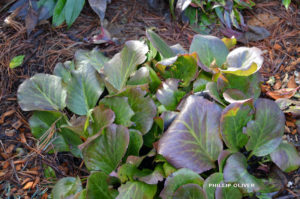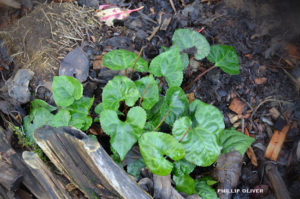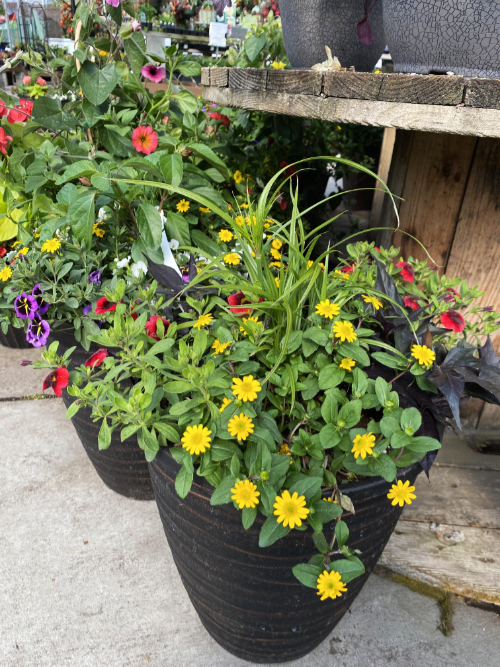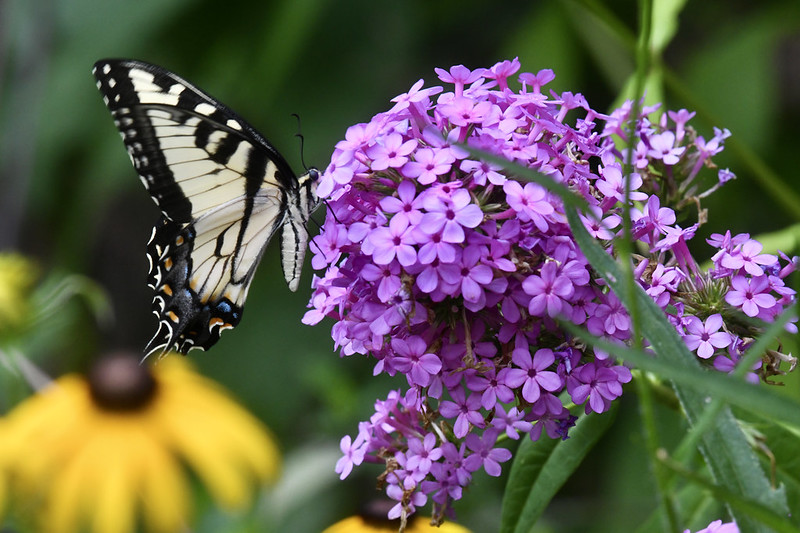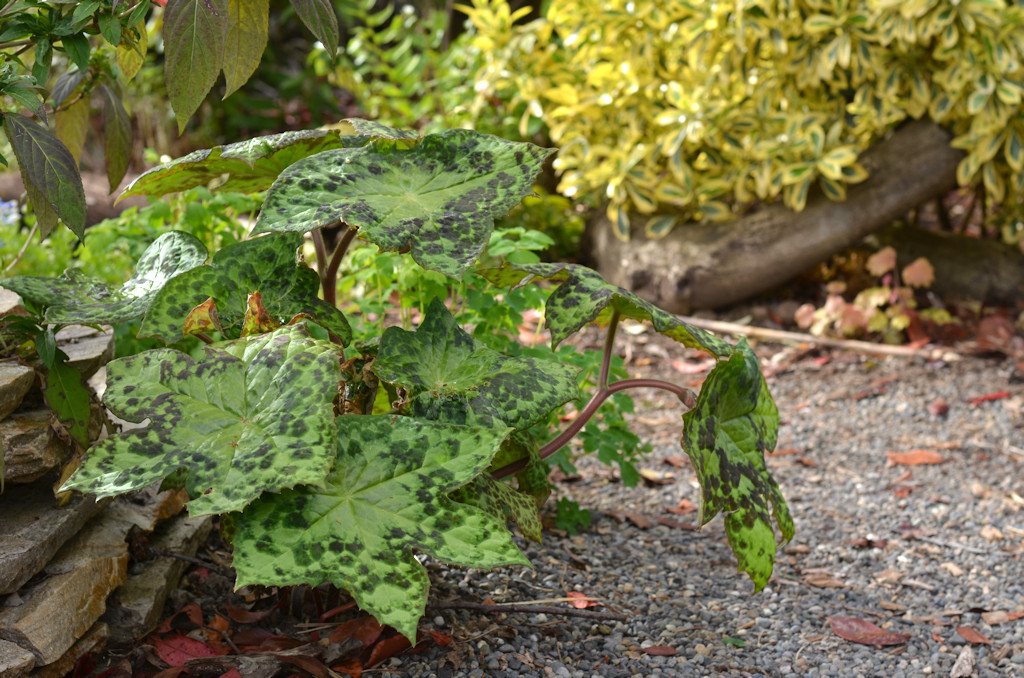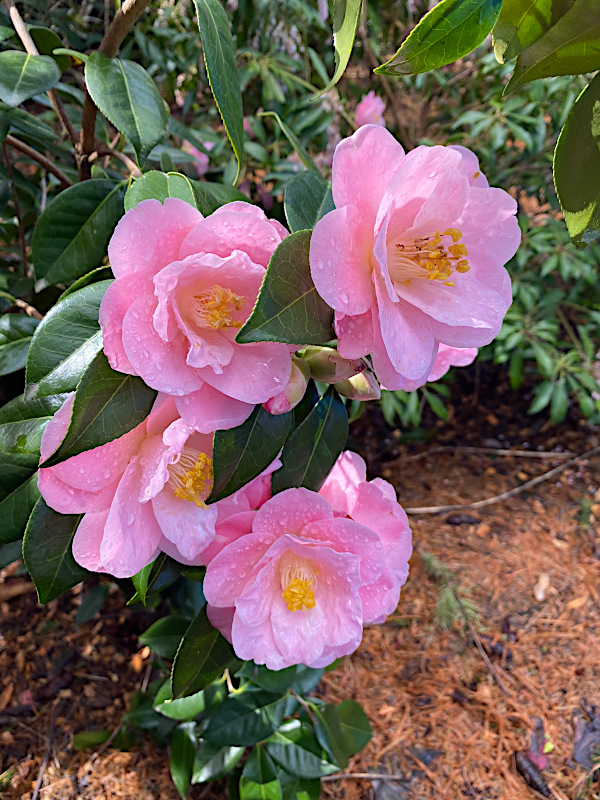Plants for Winter Interest
Here in the Pacific Northwest, we are fortunate to have a wide array of trees, shrubs and even some perennials to provide interest even during the winter months. Here are some to consider. These are plants that Yard N’ Garden Land normally carries although it may be later in the year before they are available. Please call or email first to check availability.
Sweet Box (Sarcococca)
This is a small, slow-growing shrub with waxy green leaves. Tiny fragrant white flowers appear around this time of year that perfume the air. A useful shrub for foundation, entryways or in the border. The varieties include:
- Sarcococca rusifolia which is a taller variety with red fruit, growing to 4-5 ft.
- Sarcococca confusa has black fruit and similar to rusifolia in habit.
- Sarcococca humilis is a lower growing variety (less than 2 ft. tall). Blue-black fruit and pointed leaves.
A native plant with bright yellow flowers that appear in late winter followed by blue or blue-black berry-like fruit. The foliage is prickly so place this one in out-of-the-way area. Hummingbirds love the flowers and it is an important source of food for them during the winter months. Many sizes and varieties are available.
- Mahonia repens (Creeping Mahonia), shown in the photo, is a good ground-cover type that stays below 1 feet in height and spreads to about 3 feet in width.
- Mahonia aquifolium is the variety generally known as “Oregon Grape”. It can get 6 feet tall and 5 feet wide. A variety called ‘Compacta’ is smaller (3 ft. high).
This shade-loving plant has beautiful glossy evergreen leaves that are stunning in the winter months. The plant is native from the Himalayas to Japan. Plain green leaves or variegated varieties are available. The cultivar called ‘Rozannie’ (in the photo) is a particularly nice selection that grows to 4-5 ft. and has great winter hardiness.
An evergreen shrub with holly-like leaves, this is an easy-to-grow plant with dense growth. Slow-growing but can eventually attain 4 or more feet in height and width. The name means “five colors”. New leaves emerge as red and turn to green. The varied color effect makes this a very lovely plant. It can be grown in full sun to partial shade.
Also known as “Andromeda” or “Lily of the Valley Shrub”, this popular shrub is seen throughout the region in many landscapes. Leathery evergreen leaves and clusters of bell-shaped flowers in shades of white, red and pink. Some varieties sport reddish foliage. These shrubs prefer part shade and do best with early morning sun and afternoon shade. However, some varieties tolerate sun quite well. Many varieties in various sizes and colors are available. The variety in the photo is ‘Passion Frost’.
Related to Pieris, Leucothoe prefers shady, woodland-type locations. It can be used as a low-hedging or as specimens. Plants grow from 3-5 feet, depending on variety, and have gracefully arching limbs. ‘Rainbow’, in the photo, has beautiful variegated foliage. Clusters of small-flowers appear in the spring.
This New Zealand native is sometimes tricky to grow. Good drainage is a must and some varieties are hardier than others. They are outstanding plants with many various leaf-forms and flowers available. To keep them looking their best, keep them trimmed back half-way after blooming. Shown in the photo is ‘Pretty in Pink’.
Some Evergreen Perennials
Most perennials die to the ground in winter but here are a few that keep their foliage.
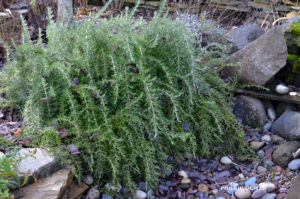
Rosemary may be considered an herb but it is very useful as a decorative plant. Taller varieties are available as well as trailing ones like ‘Irene’ and ‘Foxtail’ (in photo).

